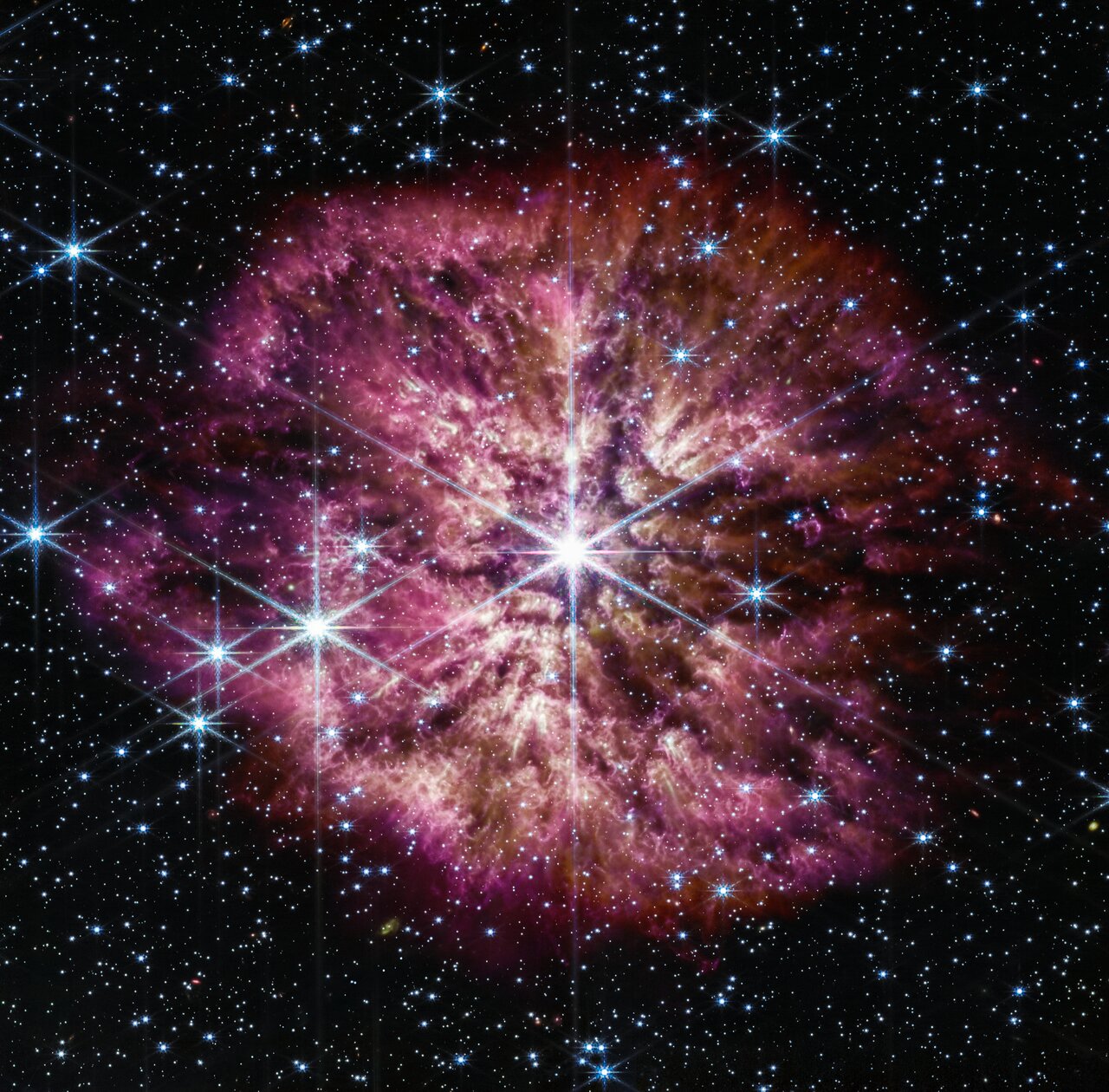A Wolf-Rayet star is a rare prelude to the famous final act of a massive star: the supernova. As one of its first observations in 2022, the NASA/ESA/CSA James Webb Space Telescope captured the Wolf-Rayet star WR 124 in unprecedented detail. A distinctive halo of gas and dust frames the star and glows in the infrared light detected by Webb, displaying knotty structure and a history of episodic ejections.
Despite being the scene of an impending stellar “death,” astronomers also look to Wolf-Rayet stars for insight into new beginnings. Cosmic dust is forming in the turbulent nebulas surrounding these stars, dust that is composed of the heavy element building blocks of the modern universe, including life on Earth.
The rare sight of a Wolf-Rayet star—among the most luminous, most massive, and most briefly-detectable stars known—was one of the first observations made by the NASA/ESA/CSA James Webb Space Telescope. Webb shows the star WR 124 in unprecedented detail with its powerful infrared instruments. The star is 15,000 light-years away in the constellation Sagittarius.
To read the full article click here: https://phys.org/news/2023-03-webb-captures-rarely-prelude-supernova.html

